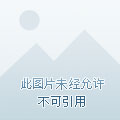
1
Writing such a word that is completely non-sticky between strokes and strokes is a good topic to test the level of the post. If you don't know how to turn when writing, just make up a stroke, the whole word will inevitably be lifeless.
Two, months
3. Emperor
Below the column "Jiucheng Palace Monument" Daily Lesson, which I wrote before, I saw a message that said, "The hooks of the Jiucheng Palace Monument are triangular, which looks very quaint, and you don't write like it." ”
When I saw this message, I couldn't help but think of a joke I made when I was a child. It is said that several elders were chatting at home that day, and one of them talked about my appearance, which was quite similar to my father.
I inadvertently picked up a sentence: "My dad just looks like me!" The words did not fall, and the people who heard it laughed. I was so young, I didn't know what these old people were laughing at—my dad looked like me!
When I saw the sentence "You don't write like it", I suddenly wanted to laugh like those elders back then, but I held back - after all, this kind of upside-down cause and effect thing, I also did it when I was a child!
Back to the point. The rubbings of the "Jiucheng Palace Stele" that we see today - by the way, a gossip, near the "Jiucheng Palace", I am accustomed to using photocopied Li Qiben from the Palace Museum. Although many professionals believe that the Tingbing Pavilion hidden in Japan is Song Tuo, it is earlier than Ming Tuo's Li Qi Ben. But I prefer the thickness of Li Qi's ben to the hardness of listening to the ice pavilion book—it is carved on the handwriting of Shu Dan.
Because of the process of engraving the "knife to imitate the pen", the glyphs on the rubbing will have different degrees of deformation and deformation compared to the ink. Especially the details of the pen, rough knife techniques are difficult to accurately express them.
So what we have to do is to look at the blade through the blade, rather than holding our own edge to imitate the blade on the rubbing. Take the word "emperor" as an example:
I think it is very likely that the stroke circled on the rubbing is carved out of the sample. It carved the left dot into a small vertical apostrophe.
Is this left point of the word "emperor" written as an apostrophe in the script? In fact, there are some, such as Chu Suiliang's book "The Sacred Order of the Wild Goose Pagoda", which has this way of writing:
Skimming the left point of the word "emperor" is an obvious way of writing that remains of the meaning of the affiliation, because in the book of lily, the stroke of the "emperor" is written as usual:
(The "emperor" in the left picture is selected from the "Shi Chen Stele", and the right picture is selected from the Mawangdui Book, and their left points are all written as skimming)
The use of lishu in the kaishu was a common writing habit among calligraphers in the Tang Dynasty. Not only Chu Suiliang, but also Ouyang Que himself did the same (Ouyang Que was most obvious when he wrote the stroke "乚").
But specifically with regard to this "emperor" character, I insist that Ouyang Que could not write the left dot as an apostrophe like Chu Suiliang.
This is because the knots of the book are flattened and square, in other words, the width of the glyph is often greater than the height.
Writing the left point as an apostrophe is one of the reasons for this visual effect - after writing it as an apostrophe, the trajectory of the pen is no longer a vertical movement downward, but a horizontal movement to the left. Therefore, when we see Chu Suiliang write the word "emperor", after referring to the meaning of li, the glyph appears to be relatively wide.
Unlike Chu Suiliang, Ouyang Qian's glyphs are often hard and steep. When writing this "emperor" word, we can clearly feel that he is consciously taking the initiative to create this visual effect:
Note that in the picture above, the strokes and strokes of the "Emperor" character are not on the same axis. With the stroke as the baseline, the stroke is placed to the right of the central axis.
The reason for this arrangement is probably because Ouyang Que deliberately closed its position a little in the direction of the Middle Palace when writing strokes, and after this stroke was adducted, if the strokes were written too short, the entire glyph would be too hurried. So he had to put the stroke slightly to the right a little bit.
This causes the structure of the "冖" shape in the middle of the glyph to shift to the right as a whole, and the stroke is written against the central axis of the "冖", so it is not aligned with the stroke.
Since the stroke is to be adducted, its closing direction can only be flushed down (as shown by the red arrow) and not to the left (as shown by the green arrow), that is, it must be written as a vertical point instead of a vertical apostrophe, otherwise the glyph will appear wide.
So I speculate that when I wrote Dan, the strokes were more likely to be written in the following way:
Fourth, avoid
— THE END —
The text | Prince of Jin
Typography | cream belly
The picture | Jiucheng Palace Monument & Jin Gongzi Original